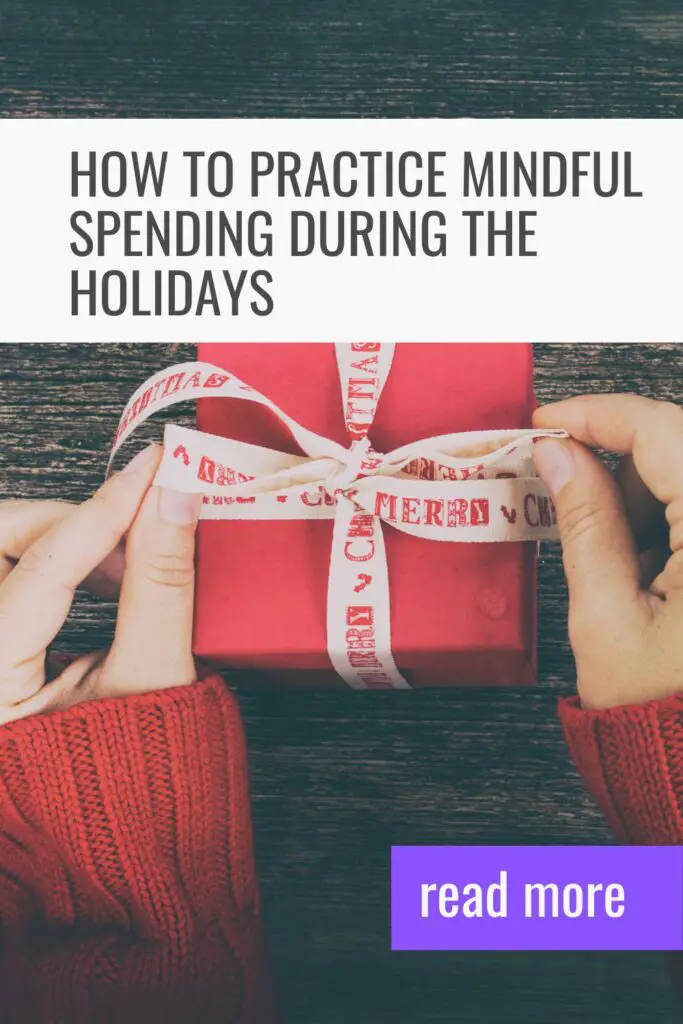
As the holiday season ramps up, I’ve been doing a lot of reflecting. Just six years ago, my husband (then boyfriend) and I were living in a motel, getting ready to spend Christmas homeless. No Christmas tree. No gifts. We had two plates, two cups, two of each eating utensil, one pot, one pan.
Now, it seems easy to go overboard during the holidays. While we aren’t rich, by any means, we are able to buy each other nice gifts and truly enjoy the season of giving. However, I want to practice more mindful spending as we enter the hustle-and-bustle of the end of the year.
What is Mindful Spending?
Mindful spending is more than knowing where your money goes. Satisfied Spending defines mindful spending as, “lifestyle-based money management.” When you practice mindful spending, you are bringing awareness to how you act, think, and feel about money. This helps you create a more sustainable money management plan for yourself because you are getting to the root of your attitude and thoughts toward finance.
Some of the main benefits of mindful spending include:
- less struggle and more enjoyment from your money
- avoiding buyer’s remorse
- decreasing feelings of guilt when you make a purchase
- improved attitude toward budgeting
- increased ability to make solid buying decisions
While I try to practice mindful spending all year long, it especially comes in hand at Christmas time. I am someone who loves giving gifts. It’s something that brings a lot of joy to my heart. So, at this time of year, the budget has to include gifts, but each gift is well thought out, researched, and I look for good deals. How can you check with yourself and be sure you’re being more mindful with your spending?
Being Mindful With Money at Christmas
It’s easy to go overboard at Christmas time, especially if you have children. I am currently squashing the desire to buy my little girl everything on her Amazon wish list (which I created for her).
At the same time, household debt is at an all-time high in the United States. If you want to avoid additional credit card debt or loans, you should trying to be more mindful about your spending. Here are questions to ask yourself before making a purchase.
- Does buying the item significantly impact you financially?
- If so, how will the item impact your life or the life of the person you’re giving it to?
- How does buying the item make you feel? Anxious? Excited?
- When you think about the purchase, does it align with your short and long-term financial plans?
Of course, gift buying and celebrations make it hard to truly assess every purchase you make this time of year. Asking yourself these questions should help though.
Readers, how do you practice mindful spending during the holidays and throughout the rest of the year? Let me know your thoughts in the comments.
Leave a Reply